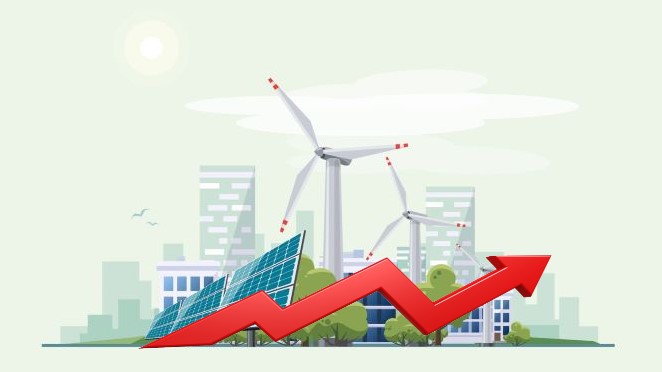Global Investments in Renewable Energy Reach $288 B, Dips 11%: BNEF
The dip in investment in 2018 can be partly attributed to falling technology costs in solar photovoltaics, which meant that the required capacity could be secured at a lower cost and slowdown in China

Global investment in renewable energy has hit $288.9 billion in 2018, with the amount spent on new capacity far exceeding the financial backing for new fossil fuel power, according to new figures published yesterday.
These numbers were released by BloombergNEF (BNEF) and were published as part of REN21’s Renewables 2019 Global Status Report.
The figure does not include hydropower above 50MW, which saw an additional USD 16 billion invested – also down on 2017, when USD 40 billion was invested. The $288.9 Billion mark was an 11% decrease from the previous year (largely as a result of a significant fall in China) but the fifth year in a row that investment exceeded the $ 230 billion mark. With more or less stable growth in renewable power capacity, the decline in investment reflects to some extent the falling costs of renewables – essentially, more capacity can be installed for less money.
Globally, solar was still the largest focus of investment, with USD 139.7 billion in 2018, down 22%.
Wind power investment increased by 2 % in 2018, to USD 134.1 billion.
The other sectors lagged far behind, although investment in biomass and waste-to-energy increased 54 %, to USD 8.7 billion.
The figures compare the amount invested in new renewable power capacity, which was USD 272.3 billion globally in 2018 (excluding large hydro), with that in new coal- and gas-fired generating capacity, which was USD 95 billion.
“Global trends continue to indicate that investing in renewable energy is investing in a profitable future. Investments in renewable energy in 2018 were three times higher than the amount invested in new coal and gas-fired generators,” said Inger Andersen, Executive Director of the UN Environment Programme. “While this is encouraging, we need to significantly step up the pace, if we are to meet international climate & development goals.”
China leads, Europe and developing countries rally
A geographical breakdown of the USD 288.9 billion figure for total renewable energy investment in 2018 shows that China led investment worldwide for the seventh successive year, at USD 91.2 billion. However, this was down 37 % from 2017’s record number, due to a number of factors including a mid-year change in the government’s feed-in tariff policy, which hit investment in solar power.
China also accounted for 32% of the global total investment, followed by Europe at 21 %, the United States at 17 %, and Asia-Oceania (excluding China and India) at 15 %. Smaller shares were seen in India at 5 %, the Middle East and Africa at 5 %, the Americas (excluding Brazil and the United States) at 3 % and Brazil at 1 %.
If China is excluded, renewable energy investment in the developing world actually increased 6 % to USD 61.6 billion, a record high.
“When overall investment falls, it is easy to think we are moving backwards, but that is not the case,” Angus McCrone, Chief Editor at BloombergNEF, commented: “Renewable energy is getting less expensive and we are seeing a broadening of investment activity in wind and solar to more countries in Asia, Eastern Europe, and the Middle East and Africa.”
Investment in Europe jumped 39 % to USD 61.2 billion, the highest level in two years, driven largely by large on- and off-shore wind investments.
In the United States, investment edged up 1 % to USD 48.5 billion, the highest level since 2011, also driven by an increase in wind power financing.
Investment in the Asia-Pacific region (excluding China and India) increased 6 % to USD 44.2 billion, the highest level in three years, while the Middle East and Africa saw investment leap 57% to a record USD 15.4 billion. However, in the Americas (excluding Brazil and the United States), investment declined 23 % (excluding large hydropower) to USD 9.8 billion.




